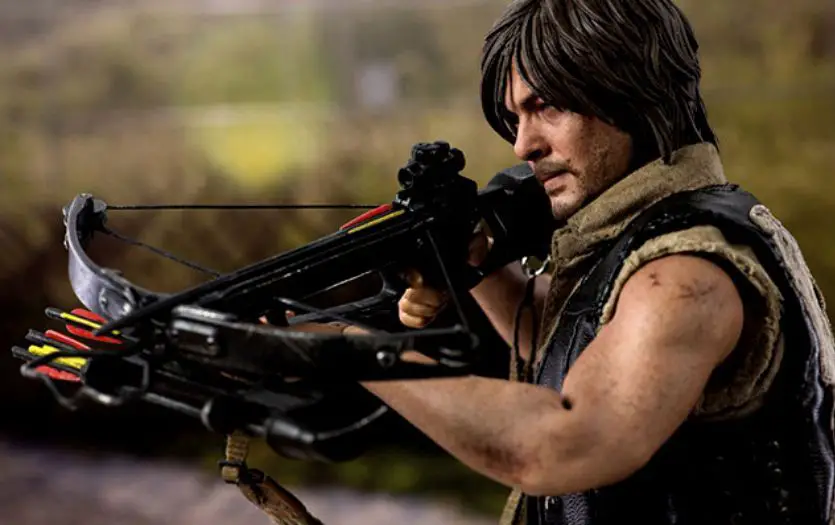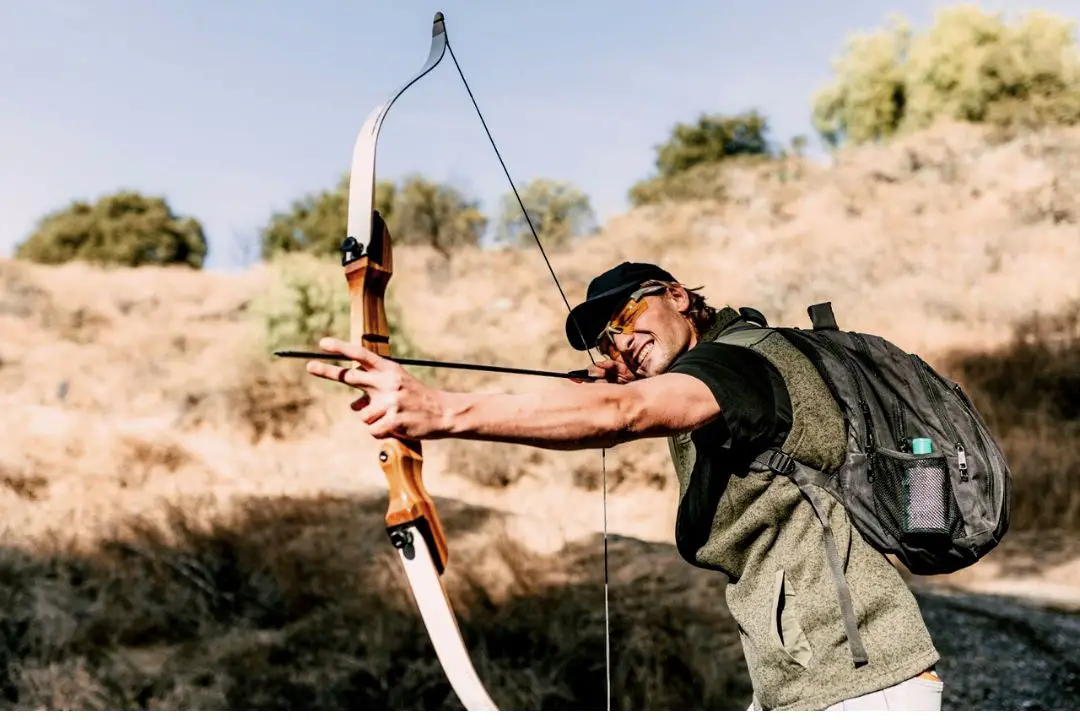Know How Mechanical Broadheads Work (and How You Can Reuse Them to Save Money)
Broadheads are an important part of the hunter’s toolkit – but only if they’re properly understood and used. In this article, we took a close look at how mechanical broadheads work and the factors affecting their efficiency.
If you’re a big game hunter, you know that having a good broadhead is essential for a successful hunt. But have you ever wondered how a mechanical broadhead works?
In this article, we'll delve into the mechanics of a mechanical broadhead and explore ways in which you can recycle and repurpose them.
So sit back, relax, and let's get started on this budget-friendly journey together!
The Basics - What is a mechanical broadhead?
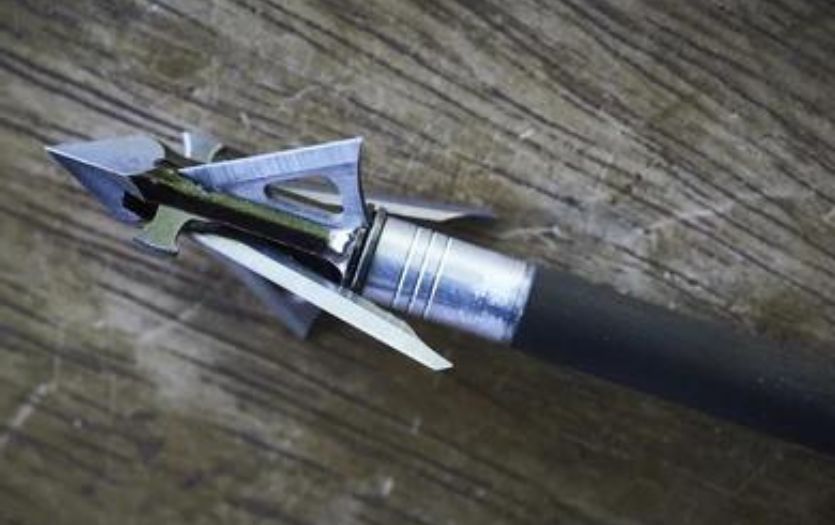
A mechanical broadhead is simply a fixed-blade broadhead with one or more movable blades. The fixed blade head is attached to the shaft of the arrow, and the movable blades are housed within the ferrule (the metal piece that joins the broadhead to the shaft).
Upon impact with an animal, the kinetic energy from the moving arrow causes the movable blades to deploy, resulting in a large wound channel and a quick kill. This gives the hunter a larger wound channel, which leads to a quicker and more humane kill.
Many hunters prefer these broadheads and describe them to be more lethal than fixed-blade broadheads because they create larger wounds. These broadheads often come with replaceable blades that can be sharpened and can also be reused, making them a popular choice among hunters.
A Mechanical broadhead is often preferred over a fixed-blade broadhead because they are much easier to sharpen. Also, they remain closed while flying and this causes less aerodynamic drag, and are less likely to wobble in flight and fly like field points. For this reason, they are often considered to be more accurate than fixed-blade broadheads.
How Do They Work?
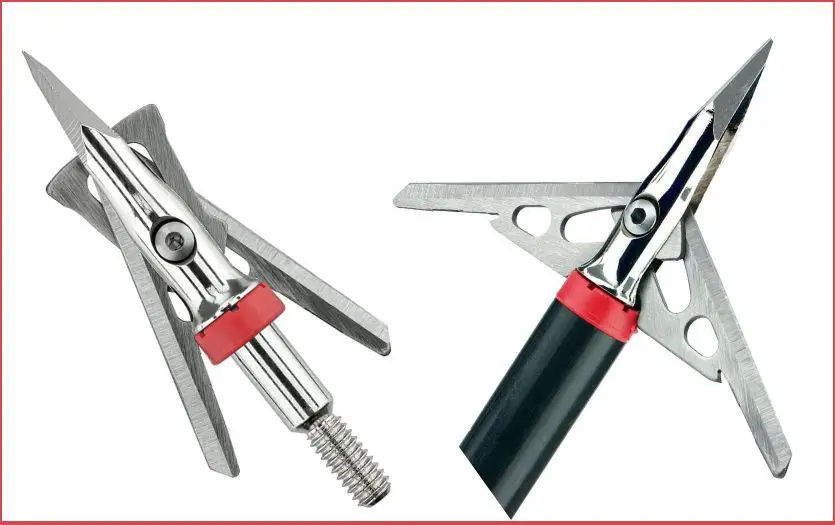
A mechanical broadhead works thanks to a couple of different mechanisms. The first is the ferrule, which is the metal sleeve that holds the blades in place. The second is the deployment mechanism, which is what causes the blades to open up upon impact at the front end. This can be a spring-loaded mechanism or a set of rubber bands.
When an animal is hit with a mechanical broadhead, the force of the impact on the mechanical head causes the ferrule to compress. This compression mechanism causes the blades to pivot outward, releases the blades from the ferrule, and allows them to be deployed in a manner that is similar to a folding knife. The blades then slice through the animal, causing severe internal damage and leading to a quick and humane kill.
When Do Mechanical Broadheads Open & Affecting Factors
A mechanical broadhead is designed to open up upon impact with an animal. This ensures that the animal is properly pierced and that the maximum amount of damage is inflicted.
There are three main factors that will affect when this broadhead opens: the weight of the arrow, the speed of the arrow, and the type of animal being hunted.
In general, lighter arrows will cause the broadhead to open sooner than heavier arrows. This is because there is less kinetic energy propelling the arrow forward, so the force of impact is not as great.
Similarly, faster arrows will also cause the broadhead to open sooner than slower arrows. This is because there is more kinetic energy propelling the arrow forward, so the force of impact is greater.
Finally, softer animals will cause the broadhead to open sooner than harder animals. This is because the softer tissue will give way more easily than harder tissue.
Take a look at this slow-motion video of broadheads opening upon impact:
Also, check out our article on the Best Rubber Hunting Boots
Are mechanical broadheads legal?
The legality of mechanical broadheads can vary depending on where you're hunting. In general, most states in the US allow hunters to use mechanical broadheads for big game hunting, but it's always important to check your local hunting regulations before heading out into the field.
Some states may have specific requirements for blade size or design, while others may prohibit the use of certain types of broadheads altogether. It's also worth noting that some public lands or wildlife management areas may have their own rules and regulations regarding equipment.
If you're unsure about whether a mechanical broadhead is legal in your area, it's always best to consult with local wildlife officials or a trusted hunting organization. They can provide you with up-to-date information on regulations and help ensure that you're following all applicable laws.
How many FPS do you need for mechanical broadheads?
When it comes to using mechanical broadheads, the FPS (feet per second) you need can depend on a variety of factors. However, as a general rule of thumb, most archery experts recommend a minimum FPS of 280-300 for mechanical broadheads. This is because a mechanical broadhead requires more kinetic energy to open up properly upon impact than fixed-blade heads.
That being said, the specific FPS you need will depend on your bow's draw weight and arrow weight. The heavier your arrow and the higher your bow's draw weight, the more FPS you'll need to achieve optimal performance with broadheads.
It's also important to note that while FPS is an important factor in determining how well broadheads will perform, it's not the only one. Other factors such as arrow spine stiffness, broadhead design, and shot placement can all play a role in determining how well your arrows will fly and how effectively they'll penetrate the game.
Ultimately, if you're unsure about what FPS you need or any other aspect of archery equipment selection, it's always best to consult with an experienced archery professional who can provide personalized guidance based on your specific needs and preferences.
Also, check out our article on the Best Drop Away Arrow Rests
Should You Reuse Your Mechanical Broadhead?
There's no right or wrong answer when it comes to deciding whether or not to reuse your broadheads—it ultimately comes down to personal preference and what's most important to you as a hunter. But let's take a closer look at the pros and cons of reusing.
The Advantages of Reusing Broadheads
1. They're More Economical.
If you're on a budget, reusable broadheads can be a great option. You can sharpen them and use them multiple times, which means you won't have to keep buying new ones.
2. They're More Durable.
The expandable broadheads are also more durable than their disposable counterparts. They're designed to withstand repeated use, so you don't have to worry about them breaking or wearing down too quickly.
3. They offer More versatile blade options.
When you buy disposable broadheads, you're usually limited to the blade designs that the manufacturer offers. However, with reusable mechanical broadheads, you can find a wider variety of blade designs to choose from. This gives you more flexibility when it comes to choosing the right broadhead for your needs.
The Disadvantages of Reusing Broadheads
1. They Require More Maintenance.
Reusable expandable broadheads require more maintenance than disposable ones. You'll need to clean and lubricate them after each use, and you'll also need to sharpen the blades periodically. This can be time-consuming and may not be worth the effort if you're only an occasional hunter.
2. They May Not Be as Sharp.
Even if you take good care of your reusable mechanical broadheads, they may not be as sharp as a brand-new set of disposable ones. This is because the blades can dull over time, no matter how well you take care of them. If sharpness is a top priority for you, then disposable broadheads may be a better option.
3. They Can Be Difficult to Find.
They're not easily available, so you may have to order them online or visit specialty hunting stores in order to find them.
How Often Should Broadheads Be Replaced?
As a hunter, it's important to ensure that your equipment is in top shape to maximize your chances of success. When it comes to a mechanical broadhead, the question of when to replace them can be a bit tricky.
If the mechanical head remains intact, you can sharpen the blades or replace them with newer ones. But even then it is a good idea to replace them periodically or else the mechanism can fail.
In general, it's recommended that hunters replace their mechanical broadheads after every use. This is because the blades on these types of broadheads often have thinner blades and are more prone to damage than those on fixed-blade broadheads.
However, there are some factors that can influence how often you need to replace your mechanical arrowheads. These include the type of game you're hunting, the conditions in which you're hunting, and how well you take care of your equipment.
For example, if you're hunting larger games like elk or moose, you may want to replace your broadheads more frequently as they will experience more wear and tear. Similarly, if you hunt in wet or humid conditions, your blades may rust or corrode more quickly.
But The Truth Is
In general, it's not recommended to reuse a mechanical broadhead. This is because the blades on mechanical broadheads are designed to deploy upon impact with an animal.
This mechanism can be delicate, and it is not uncommon for them to get damaged upon impact, especially with bones. As a result, most manufacturers do not recommend reusing expandable broadheads.
That being said, some hunters have had success in carefully inspecting their expandable broadheads after each use and gently cleaning any debris out of the mechanism.
If you decide to go this route, just be sure to inspect your broadheads thoroughly before each use to make sure they are still in good working condition.
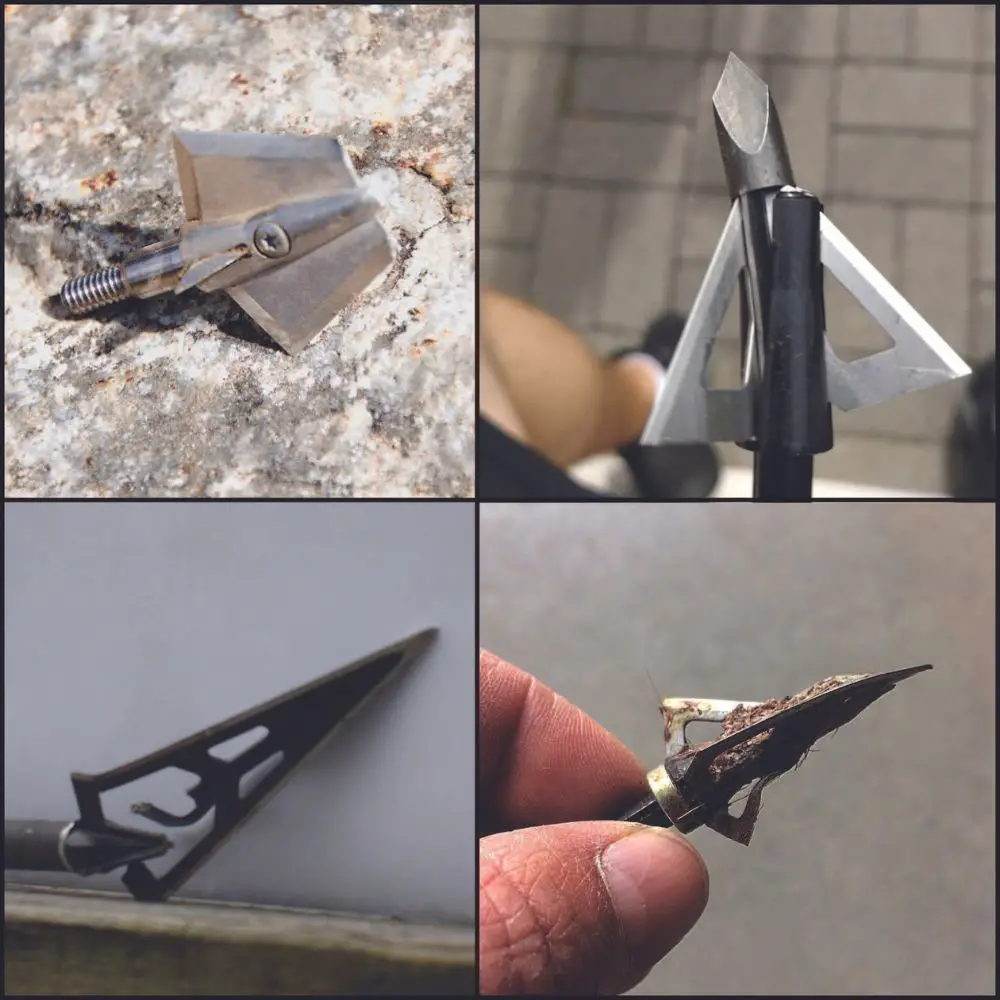
Why it is important to sharpen your mechanical broadhead
If you're a bow hunter, then you know that having sharp broadheads is crucial for a successful hunt. Even if you are not reusing your broadhead, sometimes the factory sharpness is not enough. It is important to sharpen your mechanical broadheads for several other reasons.
First, a sharp blade will ensure that the broadhead penetrates the animal properly.
Second, a sharp blade will cause less tissue damage, which is important if you are hoping to harvest the meat.
Third, a sharp blade will increase your accuracy, as a dull blade is more likely to deflect off of the bone.
Finally, a sharp blade is simply safer to use, as a dull blade is more likely to slip and cut you. With all of these factors in mind, it is clear that sharpening your mechanical broadheads is an essential part of hunting safety and success.
How To Sharpen a Mechanical Broadhead
- The first step is to remove the broadhead from your hunting arrow. Next, using a vice or clamp, secure the broadhead so that it is stable and will not move while you are sharpening it.
- Next start by disassembling your broadhead. Most mechanical broadheads can be disassembled by unscrewing the ferrule from the body of the head.
- Next, you will need to select the appropriate file for sharpening your broadhead. If you are unsure of which file to use, consult the manufacturer’s instructions. Once you have selected the correct file, insert it into the file guide and attach the guide to the vice or clamp.
- Now, you’re ready to start sharpening! Begin by filing the leading edge of the blade in smooth, even strokes. Be sure to apply light and even pressure as you file so that all parts of the blade are being sharpened evenly. Work slowly and carefully so that you do not damage the blades. Continue filling until all nicks and burrs have been removed from the blade and it is nice and sharp. If you have a hunting knife sharpener, you can use it, or else even sandpaper can be used for great results.
- Once you have finished filing the blade, remove any metal filings that may be clinging to the broadhead by using a clean cloth or brush. You can also use compressed air to blow away any metal filings. Finally use a leather strop to align the edges.
- Once the blades are sharp, reassemble your broadhead and place it with your arrow. Test it out on a piece of cardboard or paper to make sure that it is working properly.
- You’re now ready to go hunting with a newly sharpened mechanical broadhead! Repeat this process as necessary to keep your broadheads in top condition.
Check out this helpful video for a better understanding:
Also, check out our article on Best Turkey Hunting Boots
Final Thoughts
Understanding how mechanical broadheads work can not only improve your hunting success but also help you save money in the long run. By knowing the anatomy of these types of broadheads and how they function, you'll be better equipped to choose the right type for your needs and maintain them properly.
Additionally, learning how to reuse mechanical broadheads can be a great way to extend their lifespan and reduce your expenses. With a little bit of time and effort, you can easily replace damaged blades or components, saving yourself the cost of purchasing new ones.
And if you are looking for the best mechanical broadheads of 2023, then look no further! Our experts scoured the market and compiled a list of the best products available that includes not only the heavyweights like Grim Reaper Razorcut, and Muzzy Trocar, but also a few surprising choices.
From high-end models to budget-friendly options, we've got you covered. So what are you waiting for? Click here to check out our list and find the perfect product for your needs!

If you love bow hunting, some other informative articles you might like:
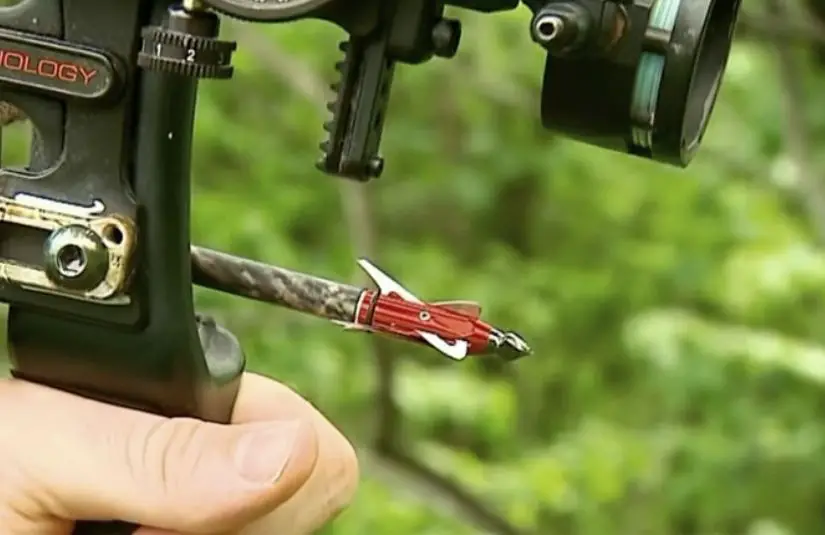
Also, check out some of our other quick reads:

